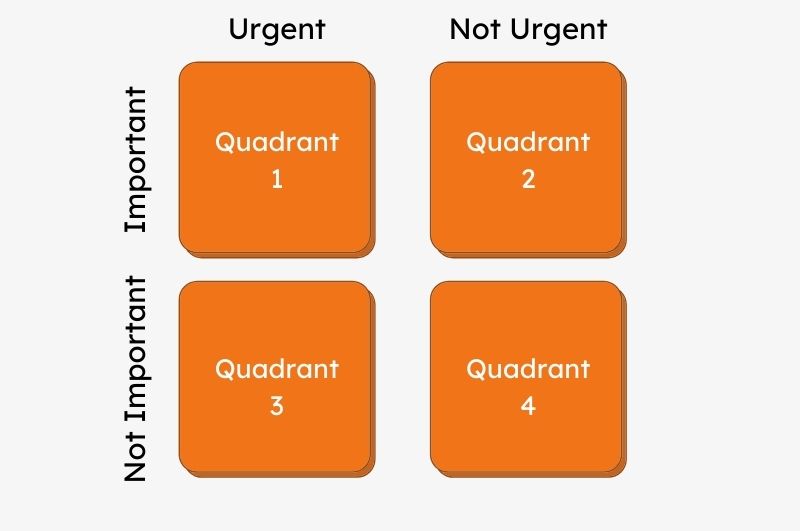Is your work week hectic, and do you constantly feel like you can’t stay on top of your daily tasks? There’s a good chance you need to approach your weekly time scheduling correctly. Your week should be planned as efficiently as possible to stay on track.
But how do you create a weekly schedule that works for you? What are the benefits of this process? Understanding the answers to these critical questions can help you better manage your day-to-day affairs, improve your work performance, and make your life more enjoyable.
The Importance of Weekly Time Scheduling
The most successful people carefully plan each day of their week and focus heavily on completing each task thoroughly and on time. Time scheduling helps to create this helpful guide for your life, one that keeps you focused on your duties and minimizes time conflicts and varied schedules with co-workers.

Furthermore, proper time scheduling ensures you have enough time to finish your activities. It also helps you avoid taking on more than you can handle. For example, you might take on extra duties at work when your company is behind to help catch up on these critical tasks.
With proper time scheduling, you can gauge how much extra time you have for these new duties and whether or not you can fit them into your life. If you lack a detailed schedule for your week, you may take on too many responsibilities without realizing it and swamp yourself in this extra work.
Proper time scheduling also helps you achieve a better work-life balance by letting you handle all your job tasks with extra time left over for fun. You can then integrate things like family time, exercise, travel, and vacations into your schedule to ensure you have time to recover from busy work periods.
How Do You Create a Weekly Time Management Schedule?
Create a weekly time management schedule by tracking your job duties every day, deciding which you need to do first, tracking how long they’ll take to perform, scheduling them through your week, and changing your time management schedule as time passes.

You can schedule your day in many ways, including creating to-do lists that detail your daily tasks, time-blocking specific hours to handle these tasks, and the Pomodoro Technique, which produces short 25-minute blocks of work. Choose which techniques work best for you, such as using the Pomodoro Technique if you like working in quick bursts and then taking a 5-15 minutes break.
7 Ways to Schedule Your Week
How do you manage your time weekly? You start by planning each day of your week based on deadlines and work schedules and pick different days to handle these tasks. Each task should receive a specific time frame based on experience with similar jobs, with about 10-15 minutes of extra time in case of emergencies.
Stay on task throughout your week by focusing on finishing each task and using various time-tracking methods to complete your tasks. Schedule at least 30 minutes of extra time throughout your day to help end all these duties on time. You can also use the five methods below to schedule your week correctly.
1. Time Management Matrix
The time management matrix is one of the most powerful ways to schedule your week. It weighs each of your tasks based on urgency and importance. These metrics measure which tasks need immediate attention (urgency) and which have the highest significance or value (importance).

Focus on doing urgent and important tasks early in your week. You can then move on to tackle other activities based on their urgency and then importance. This process helps you tackle your activities on time and minimizes work waste issues.
2. Use Online Time-Tracking Tools
The internet provides powerful time-tracking tools that help you schedule your days and week. This software lets you track your daily activities and provides immediate feedback on your scheduling. You may use this feedback to understand your scheduling and work methods better.
For example, if you went overtime on a task, online time-tracking tools can let you know how much waste time you experienced. You can then share this information in a cloud-based format to work at home and stay on task. It can also help you track project deadlines and progress as you complete tasks.
3. Pomodoro Technique
The Pomodoro Technique schedules 25-minute work periods separated by five-minute breaks. This cycle is a Pomodoro; after finishing four, you take a 20-30 minute break. People schedule their weeks using this method to provide short breaks that help refresh their creativity.

Plan your day’s tasks, breaking down your hours using this method. After a short adjustment period, you’ll likely work with more focus and effectiveness. You may even finish your tasks sooner and better than you did before.
4. Single Tasking
The days of multi-tasking are officially over. This technique doesn’t work because people need to pay more attention to each task and take longer to finish them. Single-tasking is a more powerful way to plan your week, as it gives your full attention to a single duty.
For example, you can break your daily schedule into time blocks during which you focus on just one task. This may include answering your email for 30 minutes, returning phone calls for an hour, and then concentrating on a specific project task for another hour before moving to another.
5. Gantt Charts
Gantt charts create a helpful time management tool that may make weekly scheduling easier. These bar charts represent the start and end dates of your weekly activities and help you break down your activities into simple visuals that help you better understand how much time each is likely to take.
Create weekly Gantt charts that outline each of your duties and adjust them as you finish each task. Did it take you less or more time to finish these tasks? Adjust your future charts to meet these differences to give yourself a complete understanding of your potential schedule.
“A plan is what, and a schedule is when. It takes both a plan and a schedule to get things done.” Peter Turla
6. Know When to Take a Break
Everybody needs breaks during their work week to avoid getting overworked. It’s okay to take 10-15 minute breaks throughout your workday and scatter them throughout your weekly schedule. Base your breaks on your specific daily duties, such as taking a break after answering all emails and returning calls or working two hours on a single task without respite.
7. Delegate, Delegate, Delegate!
Be bold and delegate menial tasks you don’t have time to finish. For example, if you have to collect and store hundreds of data lines for your project, consider hiring a temp worker who can do it for you. In this way, you can focus on more critical tasks. Identify any tasks that fall into this category, okay the delegation with management, and focus on the bigger picture.
Benefits of Scheduling Your Time Weekly
Many studies have examined the benefits of proper time scheduling and how it improves your work and home life. These diverse benefits focus on improving your life and saving you and your company money. Examine the benefits below before creating your work schedule.

Identifies Crunch Times
Breaking your week down into a schedule helps you find difficult crunch periods and makes planning for them more accessible. For example, you may create a schedule and notice that six critical tasks are due on the same day. You can then plan your overtime work around these periods and focus on crunching through the sub-duties required to finish these tasks on time.
Prioritizes Important Tasks
Creating a weekly schedule helps you prioritize and finish essential tasks on time. Conversely, it enables you to identify which tasks you can wait to finish or which you can delegate to others. For example, you may need to inspect a project’s completion time and identify tasks you should do yourself, such as overseeing the project. Your subordinates can do such as collecting data.
Minimizes Procrastination Risks
People who create weekly schedules typically procrastinate less because they know delays only make their job harder. People without weekly plans may feel overwhelmed by their job’s scope and procrastinate simply because they need help figuring out where to begin. For example, you may have a complex project with many steps that could feel impossible to finish without breaking it down into more straightforward tasks throughout the week. Doing so helps you stay on task and minimizes wasted work hours by keeping you working.
Final Thoughts
Follow these simple steps, and you can create a time management weekly schedule that makes sense. The biggest takeaway is to adjust your schedule in whatever way makes sense for you, including changing your Pomodoro break times, as needed, to ensure you stay on task every day.


